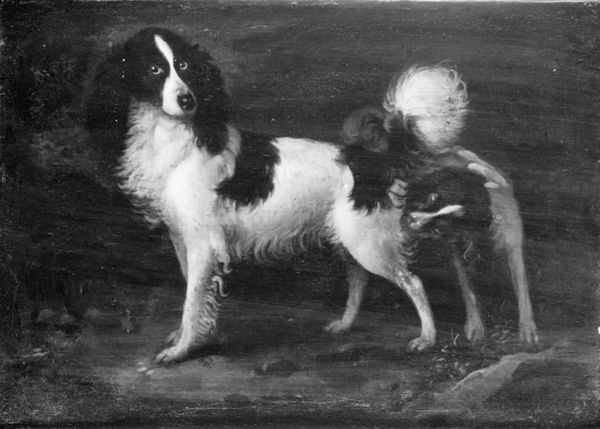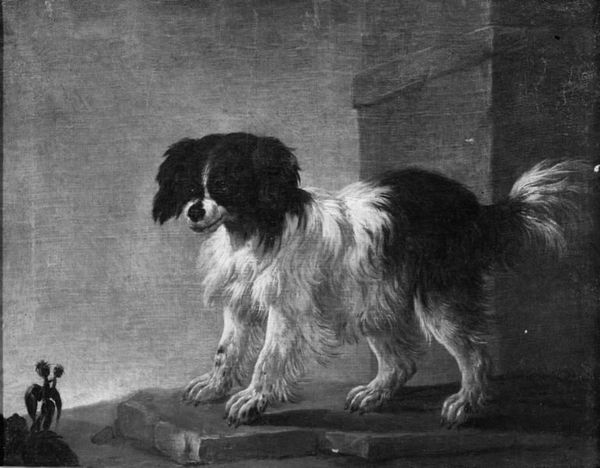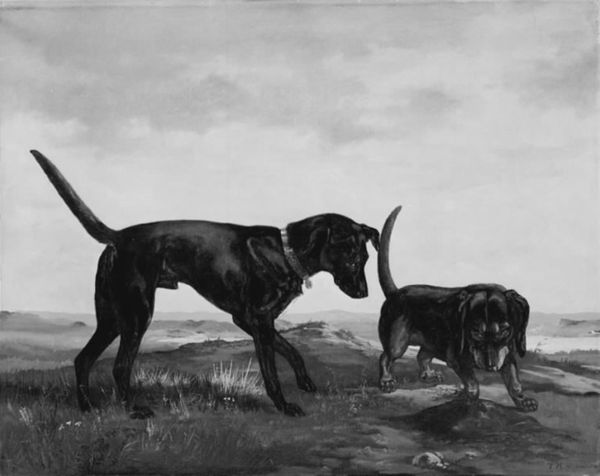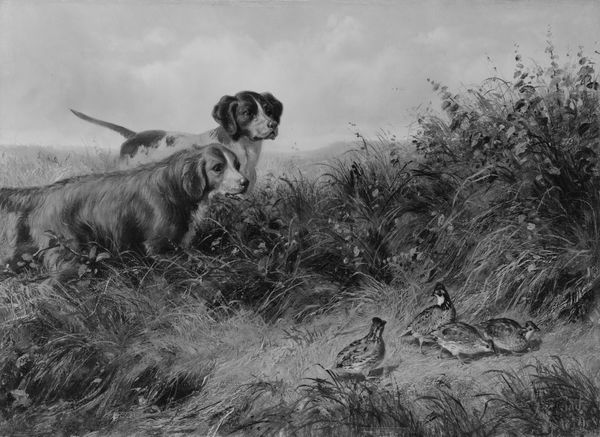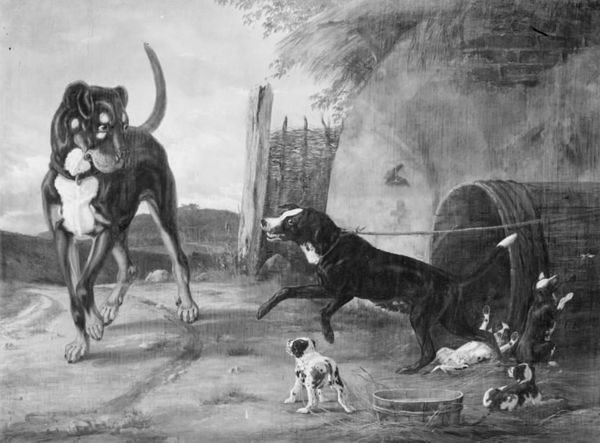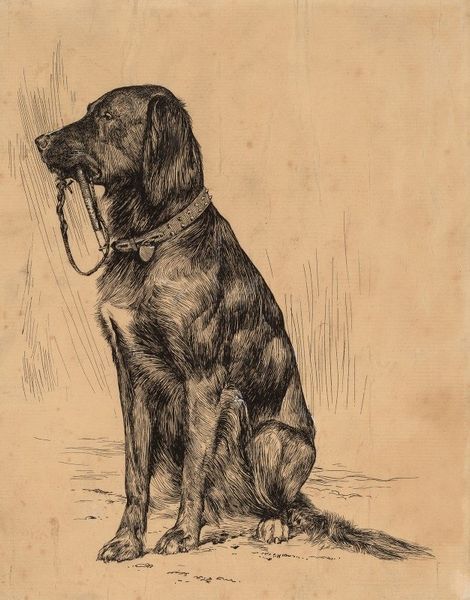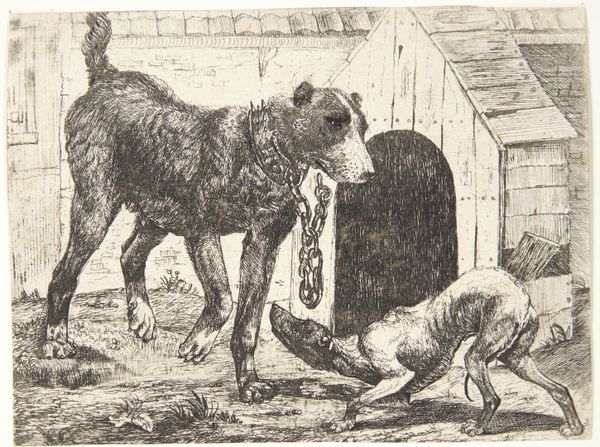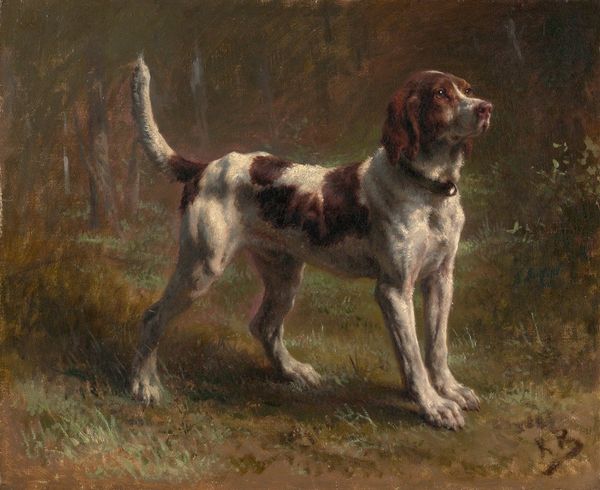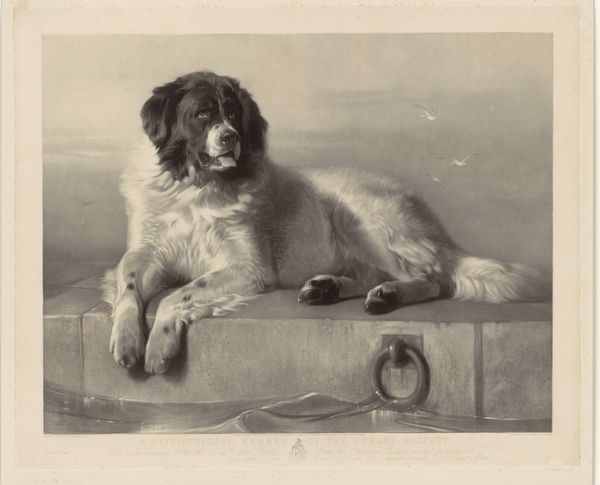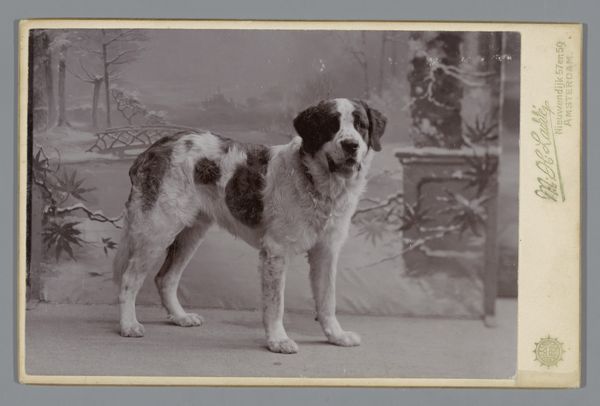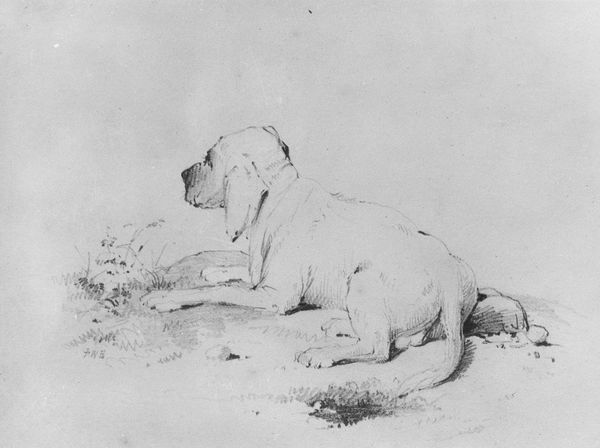
drawing, ink
#
portrait
#
drawing
#
black and white photography
#
landscape
#
ink
#
romanticism
#
black and white
#
monochrome photography
#
genre-painting
#
monochrome
#
realism
#
monochrome
Dimensions: 99.5 cm (height) x 152 cm (width) (Netto)
Editor: This is "Two Dogs in a Mountain Landscape," believed to be created between 1818 and 1833 by Christian Holm, housed here at the SMK. It’s an ink drawing and really has a monochrome, photographic quality to it. I am struck by how grounded the dogs seem in their domestic tasks amidst the wild landscape. What elements jump out at you? Curator: I am most interested in how Holm depicts the tools alongside the dogs. Notice the axe, the timber; these signal human presence not as a detached observer of nature, but as a laborer shaping the environment. The artist invites us to contemplate the act of production and the tools and materials central to mountain life. How are we meant to interpret the specific choice of rendering these tools in ink, as opposed to paint? Editor: That’s fascinating. It's interesting that Holm chose a drawing rather than painting; perhaps that was to emulate printed reproductions and the distribution of art to common people, expanding its reach beyond the elite circles. Curator: Exactly! Ink, being easily reproduced, speaks to the democratization of art, moving away from unique, precious objects available only to the wealthy. This choice emphasizes the value of labor and accessible art, rather than traditional artistic hierarchies. The consumption of artwork is brought closer to the people. Is this a landscape as romantic ideal or the site of labor? Editor: It certainly blurs the line between the two, bringing an everyday practicality to a typically sublime subject. So, he is commenting not only on the means of art production but on social production and class distinction at large? Curator: Precisely! These elements invite us to challenge established boundaries between "high art" and depictions of everyday life, elevating craft, tools and the mountain labor. The "Romantic" genre-painting has social roots and context. Editor: It really reframes how I see romanticism and the landscape tradition; it's not just about the sublime, but about the work it takes to survive within that landscape.
Comments
No comments
Be the first to comment and join the conversation on the ultimate creative platform.
